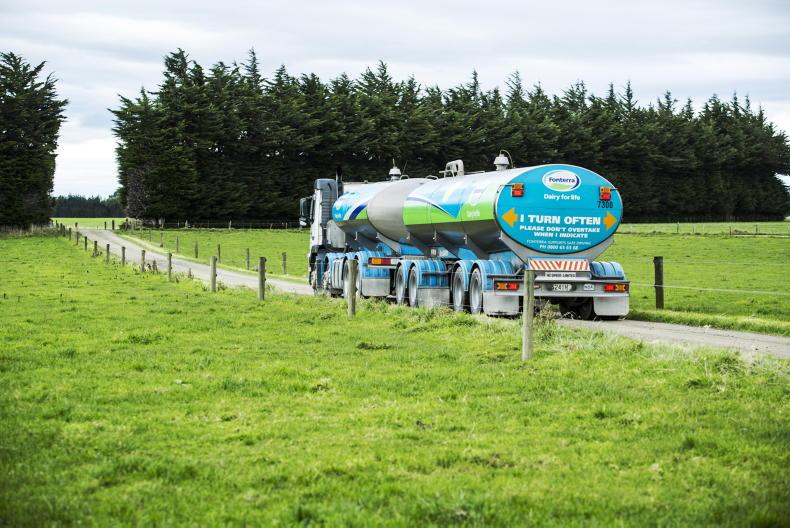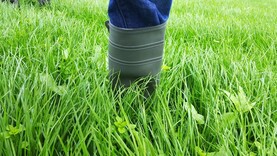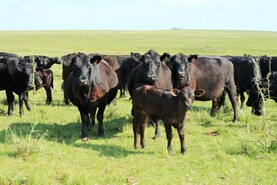World milk production is projected to grow at 1.8% annually over the next decade to reach 1.146bn tonnes (1.112bn litres) by 2034, according to the OECD FAO agricultural outlook 2025-2034.
This is an increase of 208m tonnes (202m litres) compared with the annual average between 2022 and 2024, making dairy production one of the fastest-growing categories of agricultural commodities over the next decade.
This includes all milk produced, of which 81% comes from cows, 15% from buffalo and the remainder from sheep and goats. Cow milk output alone is projected to grow from 908m tonnes 2022-24 to 1.109bn tonnes (881m litres to 1.076bn litres) by 2034.
Growth regions
Most of the growth in milk production over the next decade will take place in Asian and African countries, with India and Pakistan standing out in particular.
Volumes in India are forecast to increase from 236.7m tonnes in 2025 to 323.3m tonnes in 2034 (229.6m litres to 313.6m litres, an increase of 84m litres over the next decade).
In Pakistan, output is projected to increase from 66.6bn tonnes (64.6bn litres) in 2025 to 87bn tonnes (81.5bn litres) in 2034.
Output is forecast to grow slowly in the US and New Zealand and decline slightly in the European Union.
US volumes are forecast to grow from 103m tonnes (100m litres) in 2025 to 111.4m tonnes (108m litres) by 2034, while New Zealand is forecast to increase from 21.7m tonnes (21m litres) to 23.5m tonnes (22.8m litres) for the same period.
EU production is forecast to decline from 152.6m tonnes (148m litres) in 2025 to 149.7m tonnes (145.2m litres) in 2034. This is explained by yield increases not rising fast enough to offset falling cow numbers and an expected increase in organic production will also contribute to lower output.
Dairy cow yield
One of the most striking comparisons in dairy production in different parts of the world is the variance in cow yields.
In OECD member countries, which is similar to what are described as “developed countries,” milk yield per cow is almost four times higher than in developing countries.
In 2025, the yield per cow in developing countries is expected to be 1.8 tonnes (1,746 litres), while in OECD countries, the yield is 6.86 tonnes (6,654 litres) per cow.
This means that four cows are required in developing countries to produce the same amount of milk as one cow in Europe or North America.
To reduce greenhouse gas emissions from global dairy production, increased yields are the quickest win, although difficult to achieve in many less-developed parts of the world.
Dairy trade
Ireland is the exception in the global dairy industry, as we export the equivalent of nine litres out of every 10 that we produce.
Overall, less than 7% of global milk production is traded internationally, with most consumed close to where it is produced. This is because of its perishability and 85% water content. Milk for trade is generally dried into skimmed or whole milk powders for storage and transport.
Over the next decade, international trade in dairy products is forecast to grow by 12% to 13.8m tonnes. Trade will continue to be dominated by the top three players - the US, New Zealand and the EU - which, between them, are forecast to account for 64% of cheese, 69% of WMP, 73% of butter and 78% of SMP exports in 2034.
Comment – positive outlook for decade ahead
Dairy production and consumption is one of the fastest-growing sectors of agriculture.
Ireland experienced rapid growth in output with the ending of quotas in 2015 and readily found markets to buy the extra product in what was a golden age for Irish dairy.
The belief is that future expansion in Ireland will be limited and very much yield-driven, but it is clear that there is likely to be global demand for our exports in the years ahead.
Most of the increased production in the decade ahead is forecast to take place in countries and regions not particularly active in trade, with domestic markets their main target.
Read more
Ending hunger and boosting food security
Global annual milk output nears one billion tonnes
World milk production is projected to grow at 1.8% annually over the next decade to reach 1.146bn tonnes (1.112bn litres) by 2034, according to the OECD FAO agricultural outlook 2025-2034.
This is an increase of 208m tonnes (202m litres) compared with the annual average between 2022 and 2024, making dairy production one of the fastest-growing categories of agricultural commodities over the next decade.
This includes all milk produced, of which 81% comes from cows, 15% from buffalo and the remainder from sheep and goats. Cow milk output alone is projected to grow from 908m tonnes 2022-24 to 1.109bn tonnes (881m litres to 1.076bn litres) by 2034.
Growth regions
Most of the growth in milk production over the next decade will take place in Asian and African countries, with India and Pakistan standing out in particular.
Volumes in India are forecast to increase from 236.7m tonnes in 2025 to 323.3m tonnes in 2034 (229.6m litres to 313.6m litres, an increase of 84m litres over the next decade).
In Pakistan, output is projected to increase from 66.6bn tonnes (64.6bn litres) in 2025 to 87bn tonnes (81.5bn litres) in 2034.
Output is forecast to grow slowly in the US and New Zealand and decline slightly in the European Union.
US volumes are forecast to grow from 103m tonnes (100m litres) in 2025 to 111.4m tonnes (108m litres) by 2034, while New Zealand is forecast to increase from 21.7m tonnes (21m litres) to 23.5m tonnes (22.8m litres) for the same period.
EU production is forecast to decline from 152.6m tonnes (148m litres) in 2025 to 149.7m tonnes (145.2m litres) in 2034. This is explained by yield increases not rising fast enough to offset falling cow numbers and an expected increase in organic production will also contribute to lower output.
Dairy cow yield
One of the most striking comparisons in dairy production in different parts of the world is the variance in cow yields.
In OECD member countries, which is similar to what are described as “developed countries,” milk yield per cow is almost four times higher than in developing countries.
In 2025, the yield per cow in developing countries is expected to be 1.8 tonnes (1,746 litres), while in OECD countries, the yield is 6.86 tonnes (6,654 litres) per cow.
This means that four cows are required in developing countries to produce the same amount of milk as one cow in Europe or North America.
To reduce greenhouse gas emissions from global dairy production, increased yields are the quickest win, although difficult to achieve in many less-developed parts of the world.
Dairy trade
Ireland is the exception in the global dairy industry, as we export the equivalent of nine litres out of every 10 that we produce.
Overall, less than 7% of global milk production is traded internationally, with most consumed close to where it is produced. This is because of its perishability and 85% water content. Milk for trade is generally dried into skimmed or whole milk powders for storage and transport.
Over the next decade, international trade in dairy products is forecast to grow by 12% to 13.8m tonnes. Trade will continue to be dominated by the top three players - the US, New Zealand and the EU - which, between them, are forecast to account for 64% of cheese, 69% of WMP, 73% of butter and 78% of SMP exports in 2034.
Comment – positive outlook for decade ahead
Dairy production and consumption is one of the fastest-growing sectors of agriculture.
Ireland experienced rapid growth in output with the ending of quotas in 2015 and readily found markets to buy the extra product in what was a golden age for Irish dairy.
The belief is that future expansion in Ireland will be limited and very much yield-driven, but it is clear that there is likely to be global demand for our exports in the years ahead.
Most of the increased production in the decade ahead is forecast to take place in countries and regions not particularly active in trade, with domestic markets their main target.
Read more
Ending hunger and boosting food security
Global annual milk output nears one billion tonnes






 This is a subscriber-only article
This is a subscriber-only article










SHARING OPTIONS: